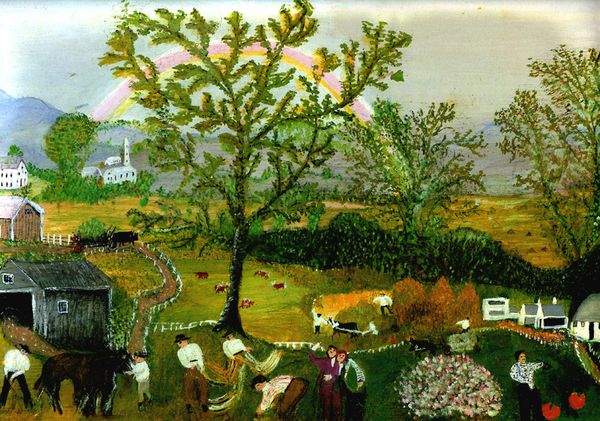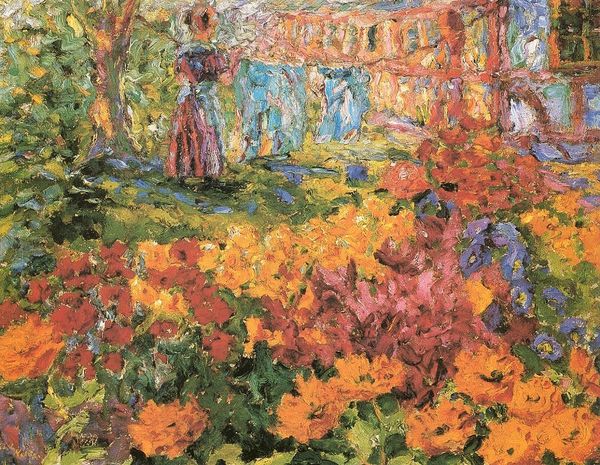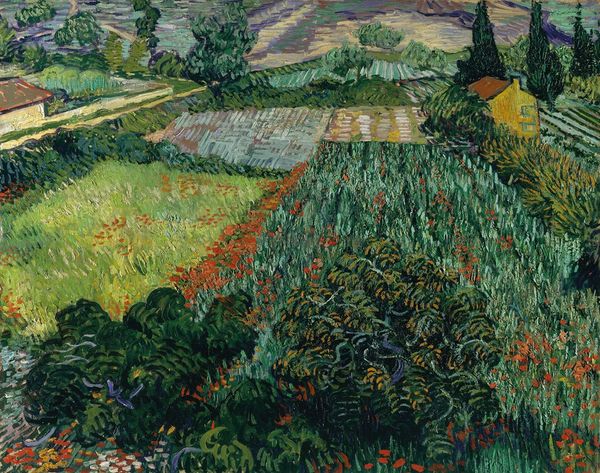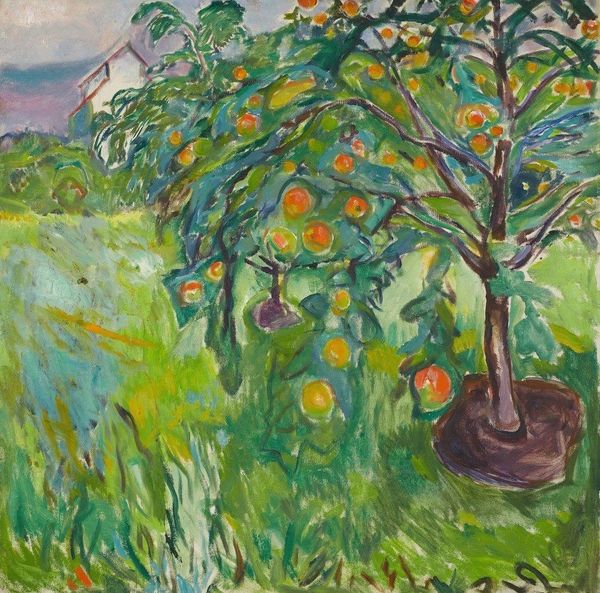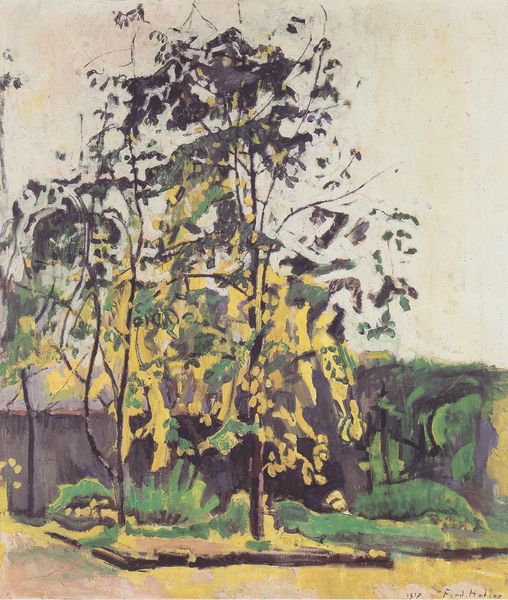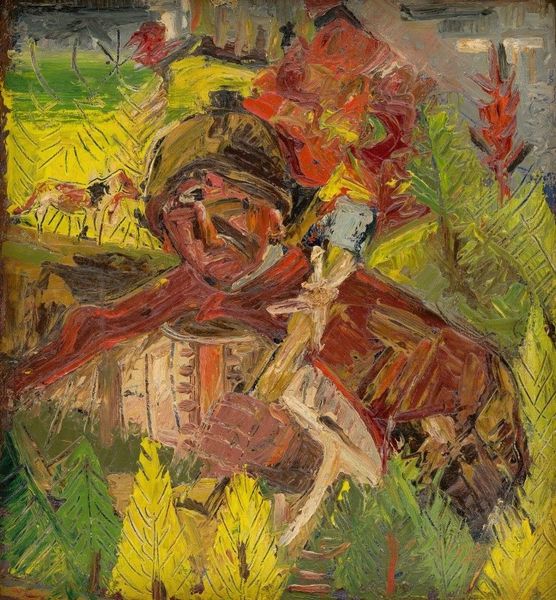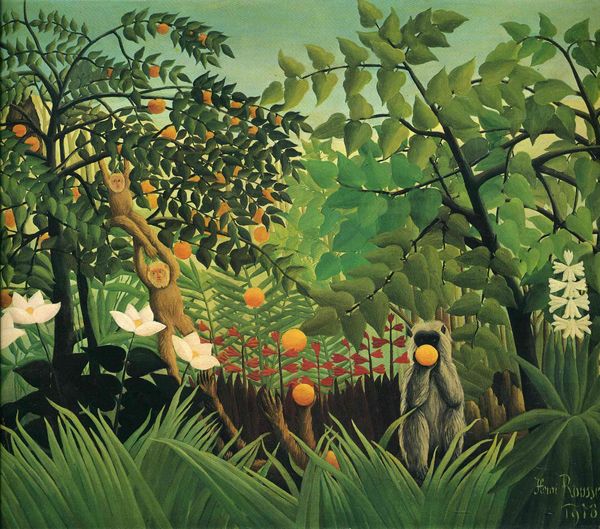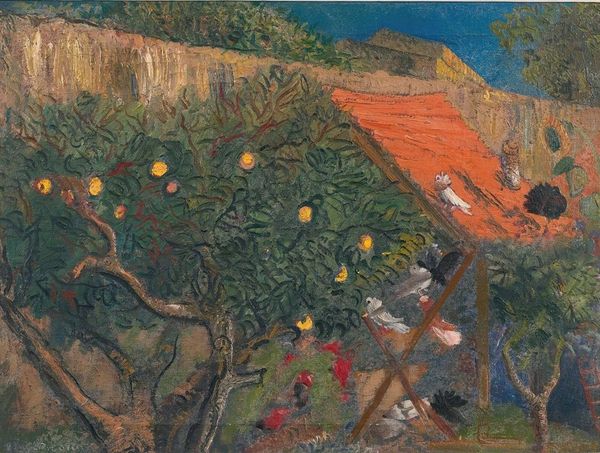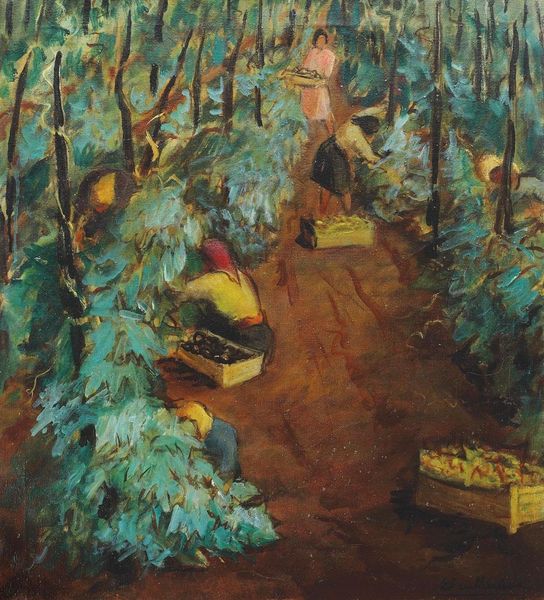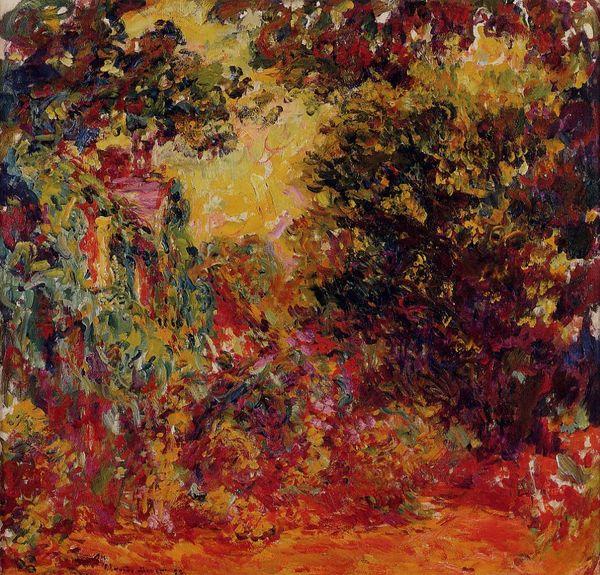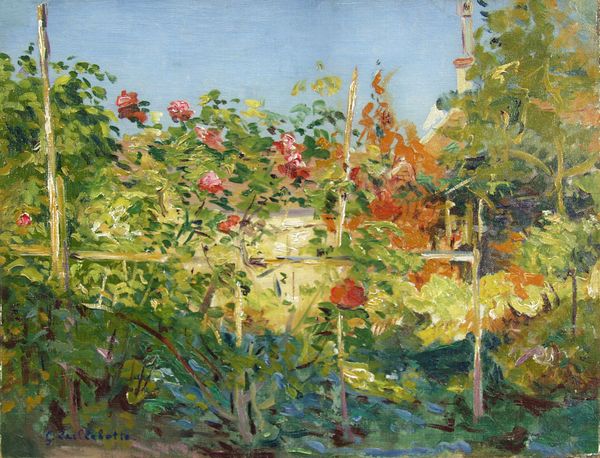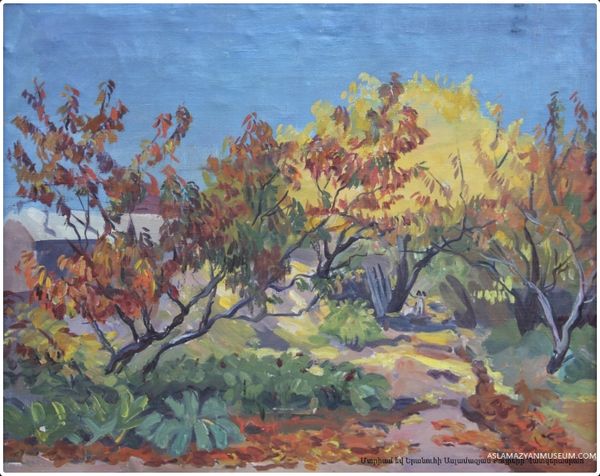
Dimensions: 100.5 x 81 cm
Copyright: Public domain
Curator: Pierre Bonnard painted "Garden with Red Tree" in 1909. The work, an oil painting, embodies a rich Post-Impressionistic style. Editor: It feels…intimate. Almost like a hazy memory of a summer afternoon. The textures are so thick, the world feels rendered in vibrant whispers. The figure of a little girl blends into the surrounding landscape! Curator: Right, notice how Bonnard is building up layers of paint? We see this density, this focus on the material substance of the work, particularly in that red tree—a concentration of pigment used to define not just form, but feeling. Think about the price of pigments and the value placed on imported materials during the era of the Impressionists! This focus on surface embodies so much historical meaning in relation to the economics of the art. Editor: But beyond just the pigment and money, imagine Bonnard outside in the open air, letting himself feel and just responding with colors—like trying to capture sunlight in a jar. And there’s that lone figure. Is it his daughter? A niece? And why the basket of red flowers? Almost looks as if he placed a tiny person in the world and the painting has sprouted up around her. The landscape is not a still thing: it lives! Curator: It's not just about capturing fleeting light. Bonnard, influenced by broader social trends, worked within a market constantly calibrating taste. We should be examining these subjects not only in terms of their artistic vision, but within a consumer culture, of increasing tourism and development! The child herself, what does she mean for gender roles and class? These themes reflect production—not merely some idle fancy! Editor: Okay, but doesn't the way he blends those yellows, reds and greens, the composition and placement of that girl in her tiny world evoke pure freedom, maybe? She can almost move off the canvas. Curator: Interesting thought, but her presence implicates gendered notions of domesticity—of idealized childhood that served specific marketing agendas. We can't simply read "freedom" without addressing the social production and expectations of this idea within culture! Editor: It’s true, looking at Bonnard now makes you want to dig deeper. All the more exciting.
Comments
No comments
Be the first to comment and join the conversation on the ultimate creative platform.
